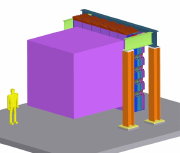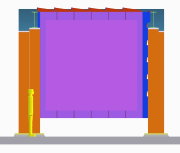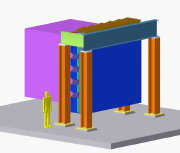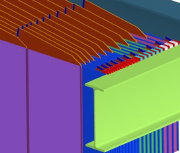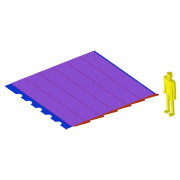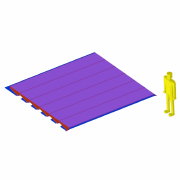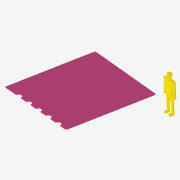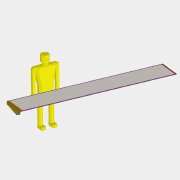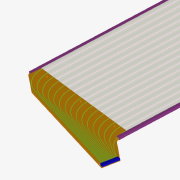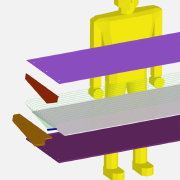|
Conceptual Design of the FINeSSE Muon Rangestack Detector Work done up to 11/03
These pictures are renderings of the solid model BE has created of the FINeSSE Muon Rangestack. Many of these pictures were included in the proposal to fund the experiment. The design is based on that of the MINOS near and far detectors and much of the development of the design, cost and production techniques is borrowed from the MINOS Technical Design Report.
As of this writing, the experiment has not been approved. Proposals have been submitted to both Fermilab and Brookhaven and BE looks forward to working on the final design in future.
Click on any of the thumbnails to get an enlarged view. You are welcome to download any of the images. If they are used for other than private viewing, credit to Bartoszek Engineering would be appreciated.
These pictures give the overall views of the scintillating fiber bath detector in front of the muon range stack detector. The range stack is a collection of steel plates and scintillating plastic bar sheets that detects muons that pass through the bath detector.
These are close-ups of the scalloped arrangement necessary to make room for the optical connectors on the edges of the scintillating bar pans.
The first picture on the left shows a sheet of steel absorber with a set of six scintillating bar/fiber pans for measuring the horizontal position of muon tracks. The second one is a vertical scintillating bar/fiber module with six pans oriented 90 degrees to the first picture. The third picture is a typical steel plate absorber. The scintillating bar is the same material used in MINOS and it is hoped that the material and facility at FNAL will be available to assemble the pans similar to the way MINOS was.
These pictures show details of the construction of the scintillating bar/fiber pans. There is a light-tight aluminum sheet metal pan surrounding bars of scintillating plastic (the white material). A wave-length shifter fiber (green) is embedded in a groove in the middle of each bar to carry light out to a clear optical fiber. The green fibers are connected to the clear fibers at an optical connector on the edge of the pan. The brown pieces are plastic plates that have grooves milled into them to route and protect the WLS fibers.
Back to the FINeSSE Main Page Page
Back to the Bartoszek Engineering Projects Page
Back to the Bartoszek Engineering Home Page
|
